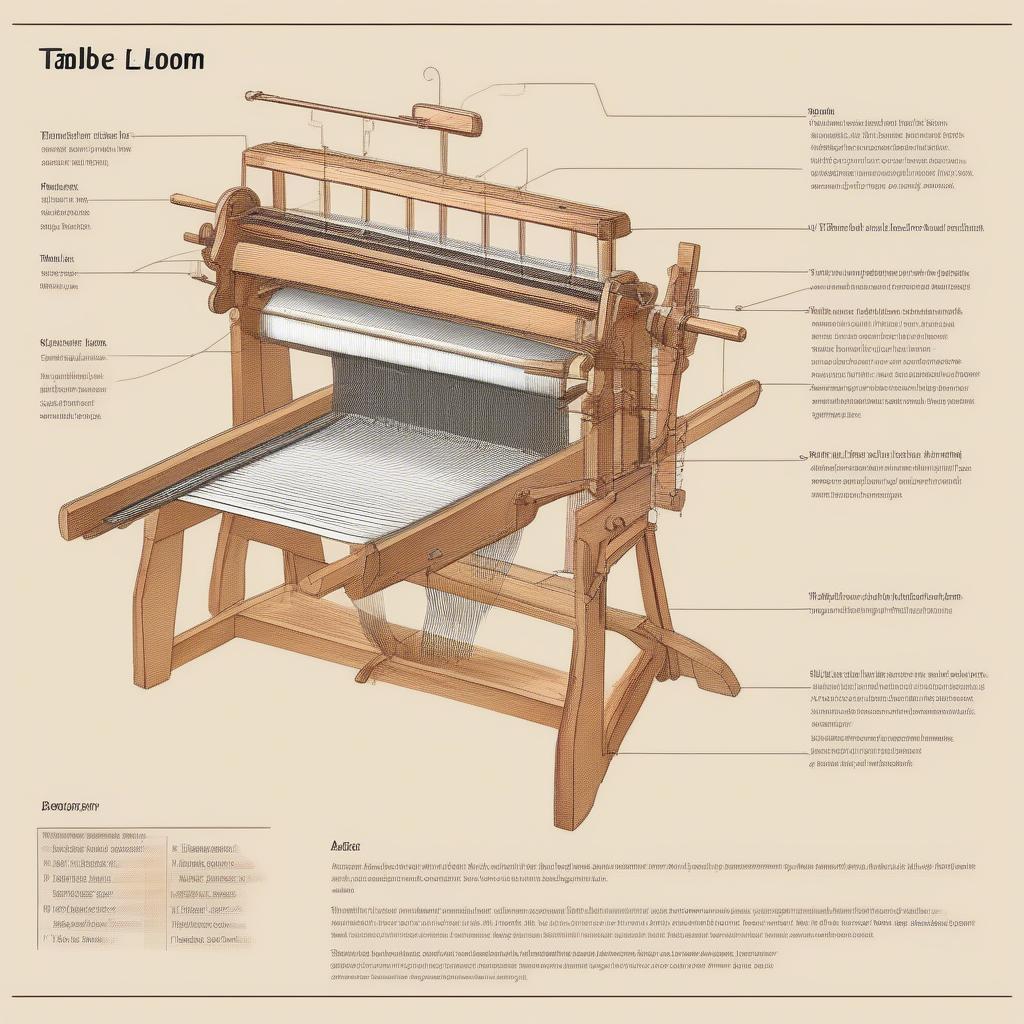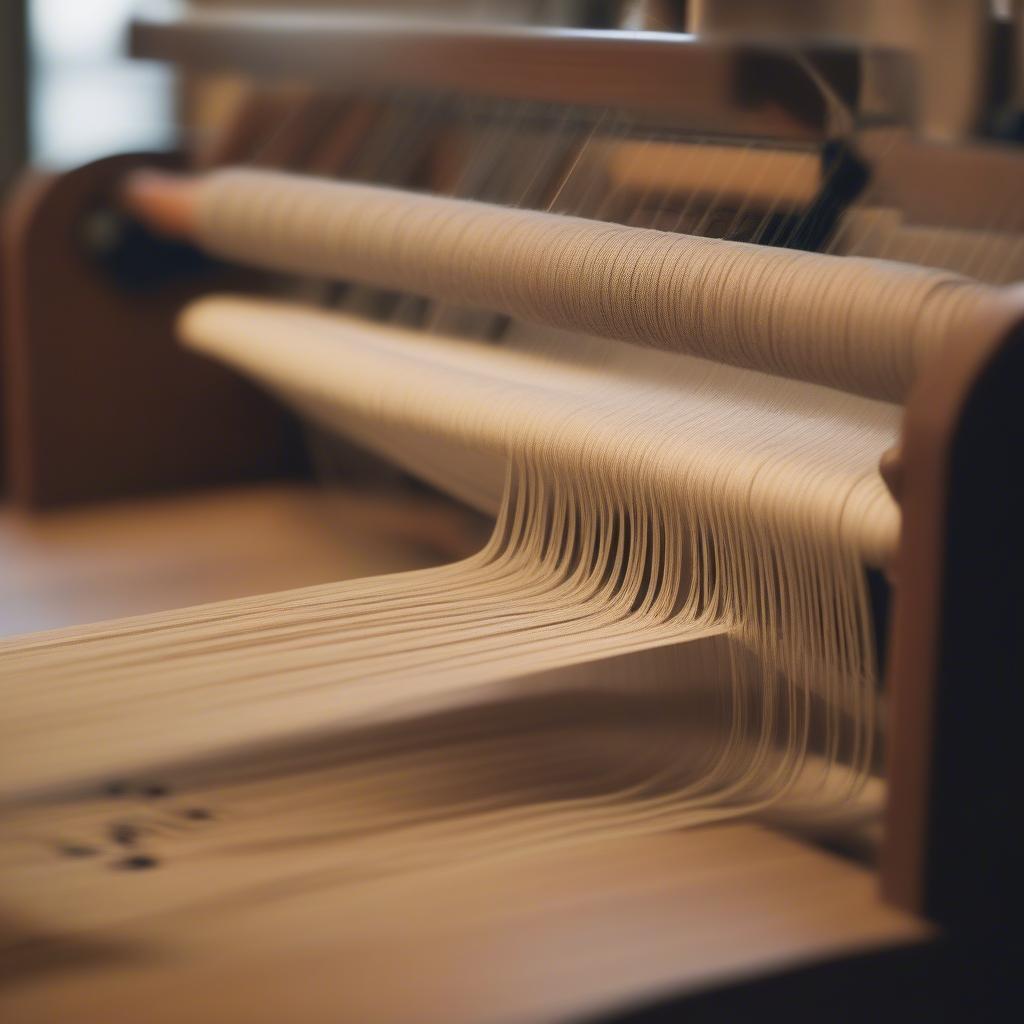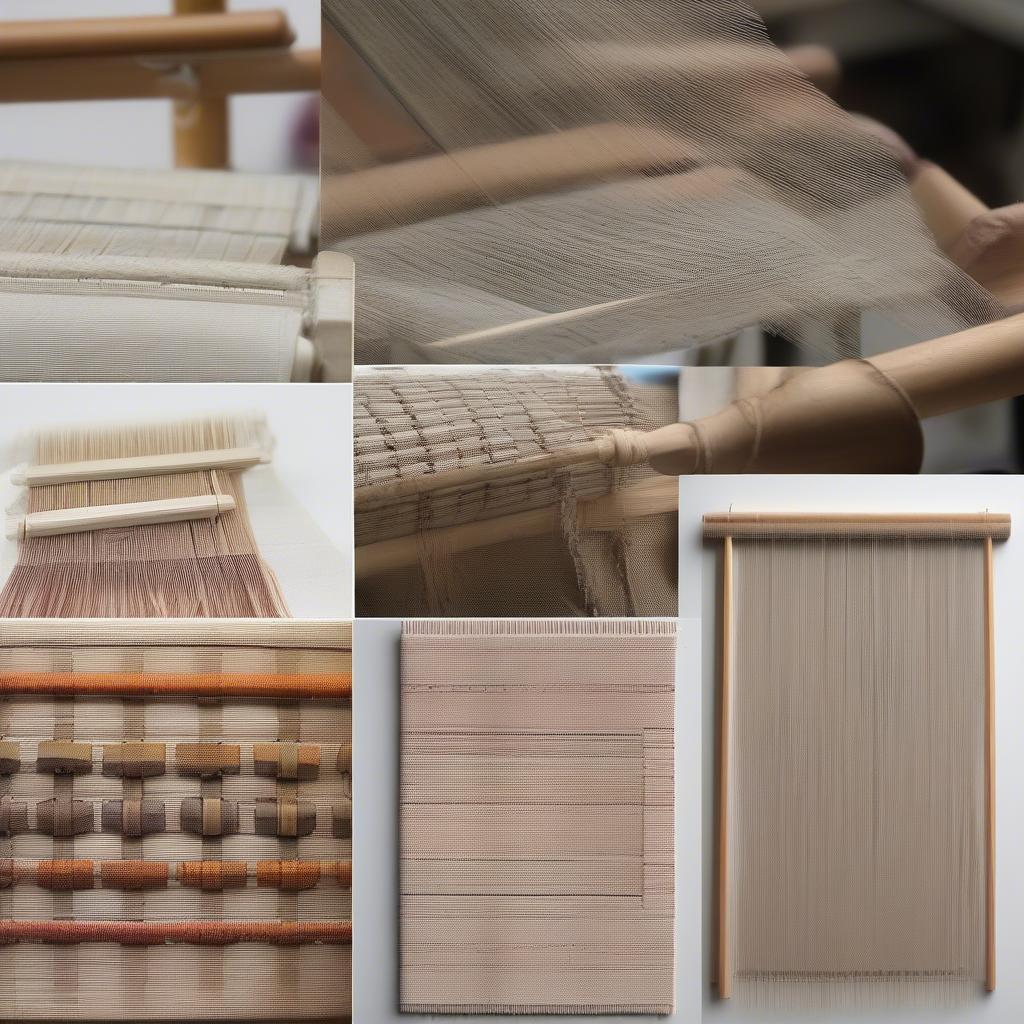Weave Table
How to Weave on a Table Loom
Learning how to weave on a table loom opens up a world of creative possibilities, from intricate tapestries to simple scarves. This guide provides a comprehensive overview of table loom weaving, perfect for beginners and those looking to refine their skills. learn to weave on schacht table loom
Getting Started with Table Loom Weaving
Before diving into the intricacies of weaving, let’s cover the basics. Understanding the different parts of a table loom and how they work together is essential for a smooth weaving experience. Think of your loom as a canvas waiting for your artistic touch.
Understanding Your Table Loom
Every table loom, whether it’s a simple frame loom or a more complex rigid heddle loom, has key components that work in harmony. The warp, the vertical threads, provides the foundation for your weaving. The weft, the horizontal threads, are interlaced with the warp to create the pattern and texture of your piece. The heddles, a series of vertical wires or strings, lift and lower the warp threads, creating the shed through which the weft passes.
 Table Loom Parts Diagram
Table Loom Parts Diagram
Preparing the Warp
The warp is the backbone of your weaving project. Preparing it correctly is crucial for achieving even tension and a successful finished piece. This process involves measuring, winding, and threading the warp onto your loom.
Measuring and Winding the Warp
Determine the length and width of your desired project. Use a warping board or warping mill to measure and wind the warp threads evenly. Consistent tension is key here, as it will prevent your finished piece from warping or becoming distorted. Think of it like tuning a musical instrument – each string needs to be at the right tension for the melody to be harmonious.
 Winding Warp on a Table Loom
Winding Warp on a Table Loom
Weaving Techniques on a Table Loom
Once your loom is warped, the real fun begins! There are various weaving techniques you can explore, each producing unique textures and patterns. From plain weave to twill and beyond, the possibilities are endless.
Plain Weave: The Foundation
Plain weave is the most basic weaving technique, creating a simple, balanced over-under pattern. It’s a great starting point for beginners and the foundation for more complex techniques. how to weave on a table loom
Beyond the Basics: Exploring Twill and Other Weaves
Once you’ve mastered plain weave, explore more intricate patterns like twill, known for its diagonal lines, or even try your hand at tapestry weaving, which allows for intricate designs and color blending. how to weave on an ashford table loom
 Different Weaving Techniques on a Table Loom
Different Weaving Techniques on a Table Loom
Troubleshooting Common Table Loom Issues
Like any craft, weaving comes with its own set of challenges. From broken warp threads to uneven tension, knowing how to troubleshoot common issues can save you time and frustration.
“A common mistake beginners make is not maintaining even tension throughout the weaving process,” says expert weaver, Sarah Miller. “This can lead to a warped finished product. Consistent tension is key for a beautiful and even weave.”
Conclusion
Weaving on a table loom offers a rewarding creative outlet. With patience and practice, you can create beautiful and functional pieces. From simple scarves to intricate tapestries, the possibilities are as limitless as your imagination. So, gather your materials, set up your loom, and begin your weaving journey! how to weave on a table loom has never been easier to learn. table weaving loom instructions
FAQ
- What is the best type of yarn for table loom weaving?
- How do I fix a broken warp thread?
- What is the difference between a rigid heddle loom and a frame loom?
- How do I finish my woven piece once it’s off the loom?
- Where can I find more resources on table loom weaving?
- What is the best table loom to weave fabric with?
- Where do I find more information on how to weave on a table loom?
Here are some common scenarios and questions that might arise during table weaving and some additional links that may help you learn even more about how to weave on a table loom:
Scenario 1: Warp threads are breaking frequently.
- Possible Cause: Too much tension on the warp threads.
- Solution: Loosen the tension slightly.
Scenario 2: The edges of the woven piece are uneven.
- Possible Cause: Inconsistent beating.
- Solution: Ensure even pressure when beating the weft.
best table loom to weave fabric with might be helpful for you if you’re just getting started.
Need help? Contact our 24/7 customer service hotline: +84 388 951 999. We’re located in Hanoi, Vietnam and Tech Avenue, Suite 12, San Francisco, CA 94105, USA.
